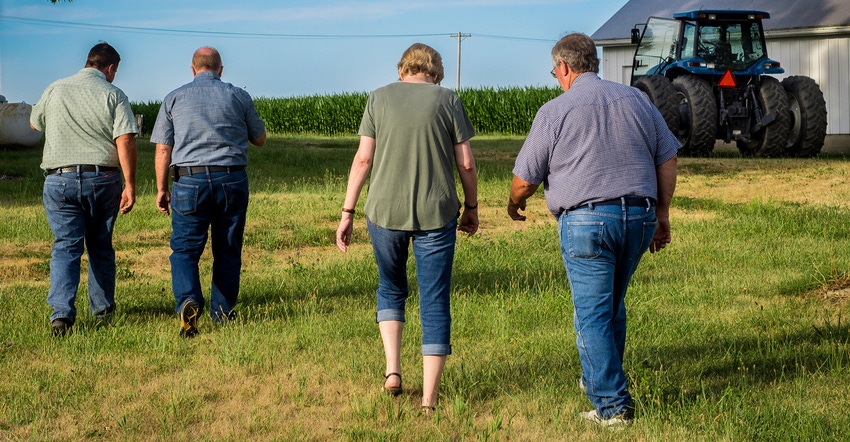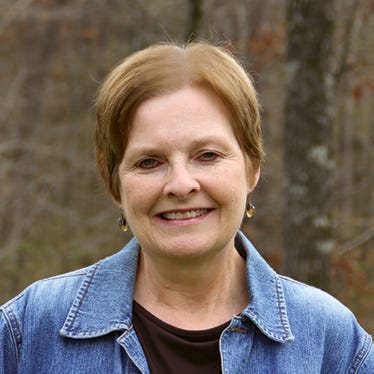March 19, 2020

Editor’s note: Welcome to Farming From Afar, a new quarterly column looking at the challenges off-farm heirs find in managing farmland that’s been passed down to them. You may recognize Cynthia Ryan’s byline from her story last fall.
During a visit to my family’s farm in Dewitt County, Ill., in late January, I stopped by the Farm Service Agency to catch up on paperwork. I walked in feeling pretty confident about all that I’d grasped about running the farm in the two years since Dad’s passing. That is, until Ruth Martin, program technician at the local branch, mentioned the upcoming elections for the 2018 Farm Bill.
“You’ll need to choose ARC [Agriculture Risk Coverage] or PLC [Price Loss Coverage] for corn and beans,” Ruth said. “Deadline for 2019 is in two weeks.”
Uh-oh.
I recalled seeing headlines about these options in ag news but hadn’t had time to dig into details while keeping multiple plates spinning away from the farm, back at my home in Alabama. I felt the farm shoe, er, workboot, dropping as I listened to Ruth and nodded my head as if I knew what this election was all about.
As I pulled out of the FSA parking lot, I thought about the many decisions Dad had made in response to decades of U.S. farm bills. Now, it was my turn. With the 2019 deadline looming, I devised a four-step strategy:
1. Get a lay of the land. As my confidence wavered, I stood back to assess the bigger picture. What was at stake here?
These programs are offered by the government to help farmers recover at least some of their losses should grain prices dip too low (the thrust of the PLC option) or operator revenues fall below the county and market year average (how ARC is calculated). In lay terms, the programs represent an added safety net beyond federal crop insurance if things take a downturn during the years covered by the 2018 Farm Bill.
The most important thing, Ruth advised, was to study up on each program and sign up by the stated deadlines. I told myself that at least I knew what my basic options were and had the deadlines recorded in my calendar. Not much else.
2. Consult experts, near and far. As I often do when treading on unfamiliar ground, I texted each of our farm operators for advice. Which programs were they planning to elect for 2019 corn and soybeans? What was their reasoning? For the time being, 2020 crop deadlines seemed far away.
Bob and Mark both opted for ARC for soybeans and PLC for corn for the 2019 crop.
“It’s a gamble,” Bob told me. “If prices are below the reference price, I went with PLC. ARC if prices are above.”
Mark agreed, adding that his ARC election for soybeans was “because county yields have been strong in recent years.”
But I drew on Dad’s passed-down advice not to base a decision solely on what those within shouting distance have to say. I enrolled in a farmdoc webinar put together by University of Illinois ag economists outlining the benchmarks and formulas underlying each program and offering guidelines for choosing one or the other for specific crops grown in specific regions. Soybean yield in Dewitt County is a case in point.
3. Elect. Like Bob and Mark, I elected PLC for 2019 corn and ARC for 2019 beans. I’m still thinking about which way I’ll go for the 2020 crop deadline.
4. Reflect. One good thing about farming is the opportunity to learn from your mistakes and do things differently next season. Best-case scenario, farmers won’t need to collect on the promises of any of the programs available through the 2018 Farm Bill. But if the need arises, I — along with farmers who have been at this game far longer than I — will know more than I do at this moment about making the right choice for our operation.
And that’s a step further than I was when I went into the FSA office.
Ryan is a farmer’s daughter from Clinton, Ill., and a professor at the University of Alabama at Birmingham. Following her father’s death and mother’s relocation to her Alabama home, Ryan manages the family farm from afar.
About the Author(s)
You May Also Like






